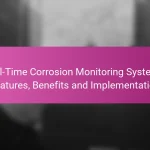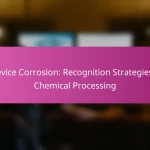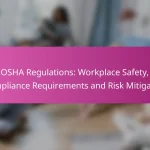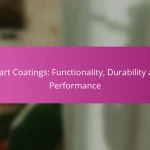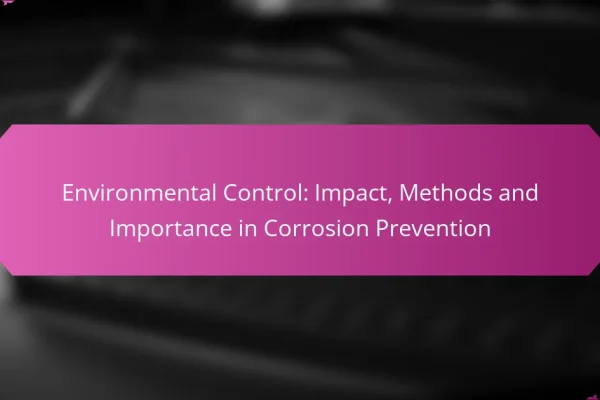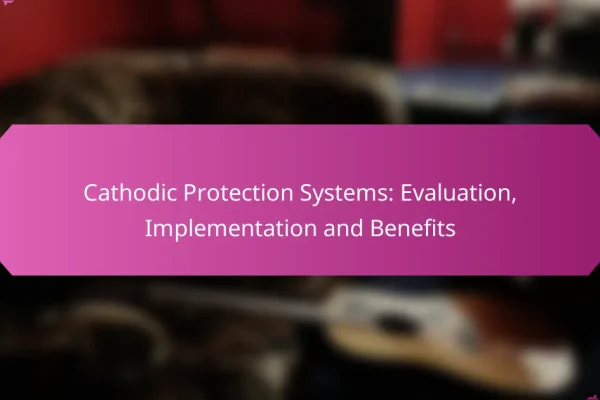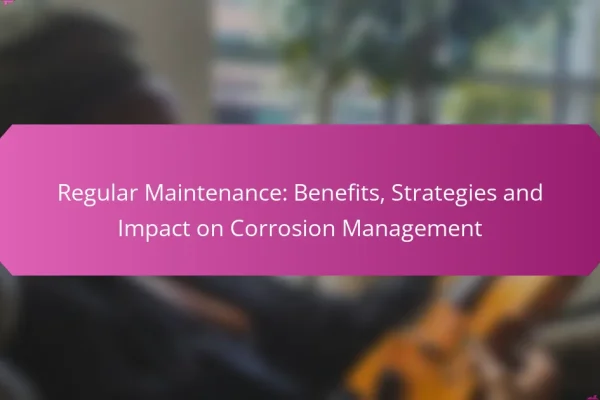What are the best corrosion prevention techniques?
The best corrosion prevention techniques include methods that protect metal surfaces from environmental factors that cause deterioration. These techniques can be applied individually or in combination to enhance effectiveness and longevity.
Cathodic protection
Cathodic protection is a method that uses electrical current to prevent corrosion on metal surfaces, typically in buried or submerged environments. This technique involves attaching a sacrificial anode, which corrodes instead of the protected metal, or using impressed current systems to counteract corrosion processes.
It is commonly used for pipelines, storage tanks, and ships. Regular monitoring and maintenance are essential to ensure the system remains effective over time.
Coatings and paints
Coatings and paints serve as a physical barrier between the metal surface and corrosive elements such as moisture and oxygen. High-quality paints, epoxies, and specialized coatings can significantly extend the life of metal structures.
When selecting coatings, consider factors like the environment, application method, and required durability. Regular inspections and touch-ups are necessary to maintain the integrity of the coating.
Corrosion inhibitors
Corrosion inhibitors are chemical substances that, when added to a fluid or applied to a surface, reduce the rate of corrosion. They can be used in various applications, including cooling systems, pipelines, and metalworking fluids.
Choosing the right inhibitor depends on the specific environment and metal type. Regular monitoring is crucial to ensure the inhibitors remain effective and to adjust dosages as needed.
Galvanization
Galvanization involves coating steel or iron with a layer of zinc to protect against corrosion. The zinc serves as a sacrificial anode, corroding in place of the underlying metal.
This method is particularly effective for outdoor structures, such as fences and utility poles, where exposure to moisture is common. The lifespan of galvanized coatings can vary, typically lasting several decades depending on environmental conditions.
Environmental control
Environmental control focuses on managing factors that contribute to corrosion, such as humidity, temperature, and exposure to corrosive agents. Techniques can include dehumidification, temperature regulation, and the use of protective enclosures.
Implementing environmental controls can be particularly beneficial in industrial settings or coastal areas. Regular assessments of the environment can help identify and mitigate corrosion risks effectively.
How does cathodic protection work?
Cathodic protection is a technique used to prevent corrosion on metal surfaces by making them the cathode of an electrochemical cell. This process involves applying a direct current to the metal, which reduces the oxidation reactions that lead to corrosion.
Impressed current systems
Impressed current systems utilize an external power source to supply a continuous flow of electrical current to the metal structure. This method is effective for large structures, such as pipelines and storage tanks, where a consistent current is needed to counteract corrosion. The system typically includes anodes made from materials like graphite or mixed metal oxides, which are strategically placed to distribute the current evenly.
When implementing impressed current systems, it is crucial to monitor the voltage and current levels regularly to ensure optimal performance. Over-protection can lead to hydrogen embrittlement, while under-protection may not sufficiently prevent corrosion.
Galvanic anodes
Galvanic anodes, also known as sacrificial anodes, work by using a more reactive metal to protect the primary metal structure. These anodes corrode preferentially, thereby sacrificing themselves to protect the underlying metal. Common materials for galvanic anodes include zinc, magnesium, and aluminum, which are chosen based on the specific environment and application.
When using galvanic anodes, it is essential to select the right anode material for the environment, as this affects the efficiency of the corrosion protection. Regular inspections are necessary to replace anodes as they corrode over time, ensuring continued protection against corrosion.
What are the benefits of using coatings?
Coatings provide significant advantages in corrosion prevention by forming a protective layer that shields surfaces from environmental factors. They enhance the lifespan of materials, reduce maintenance costs, and improve overall performance.
Enhanced durability
Coatings increase the durability of materials by preventing direct contact with corrosive elements such as moisture, salt, and chemicals. This protective barrier can extend the life of metal structures and components, often by several years, depending on the environment.
For instance, a well-applied epoxy coating can significantly enhance the resistance of steel structures in coastal areas where saltwater exposure is common. Regular inspections and timely reapplication of coatings can further ensure long-lasting protection.
Cost-effectiveness
Investing in coatings can lead to substantial cost savings over time by minimizing the need for repairs and replacements. While the initial application may require a moderate budget, the long-term benefits often outweigh these upfront costs.
For example, using a high-quality protective coating can reduce maintenance expenses by up to 50% in industrial settings. Additionally, coatings can improve energy efficiency by lowering the need for heating or cooling in certain applications, contributing to overall operational savings.
What factors influence corrosion rates in coastal areas?
Corrosion rates in coastal areas are primarily influenced by humidity, salt exposure, and temperature variations. These factors can accelerate the deterioration of materials, especially metals, making it crucial to understand their impact for effective corrosion prevention.
Humidity levels
High humidity levels can significantly increase the rate of corrosion in coastal environments. Moisture in the air promotes the formation of electrolytic solutions on surfaces, which facilitates the electrochemical reactions that lead to rust and corrosion.
To mitigate corrosion caused by humidity, consider using coatings or sealants that provide a barrier against moisture. Regular maintenance and inspections can also help identify early signs of corrosion, allowing for timely intervention.
Salt exposure
Salt exposure is a major contributor to corrosion in coastal areas, as saltwater is highly corrosive to metals. The presence of sodium chloride accelerates the electrochemical processes that lead to rust formation, particularly on unprotected surfaces.
To combat salt-induced corrosion, apply protective coatings and use corrosion-resistant materials, such as stainless steel or aluminum. Additionally, regular cleaning to remove salt deposits can help prolong the lifespan of structures and equipment exposed to marine environments.
How can corrosion inhibitors be applied?
Corrosion inhibitors can be applied through various methods, including direct addition to fluids, surface coatings, and electrochemical techniques. The choice of application depends on the specific environment and materials involved, aiming to reduce corrosion rates effectively.
In oil and gas pipelines
In oil and gas pipelines, corrosion inhibitors are often injected into the flow to protect metal surfaces from corrosive substances such as water and acids. Commonly used inhibitors include amines and phosphonates, which can be tailored to specific conditions like temperature and pressure.
Regular monitoring of inhibitor concentration is crucial to ensure effectiveness. Operators should consider factors such as flow rates and the presence of contaminants that may affect inhibitor performance. A typical practice is to maintain inhibitor levels within a specified range to optimize protection without incurring excessive costs.
In water treatment systems
In water treatment systems, corrosion inhibitors are added to prevent the deterioration of pipes and equipment caused by aggressive water chemistry. Common inhibitors include polyphosphates and silicates, which help to form protective films on metal surfaces.
It’s essential to adjust the dosage based on water quality parameters such as pH, hardness, and temperature. Regular testing can help maintain optimal inhibitor levels, ensuring that the system operates efficiently while minimizing corrosion-related issues. Operators should also be aware of local regulations regarding chemical use in water treatment to ensure compliance.
What is the role of galvanization in corrosion prevention?
Galvanization is a key technique used to prevent corrosion by coating metal surfaces with a layer of zinc. This protective layer acts as a barrier against moisture and corrosive elements, significantly extending the lifespan of the underlying metal.
Hot-dip galvanization
Hot-dip galvanization involves immersing steel or iron in molten zinc, creating a robust, bonded coating. This process not only provides excellent corrosion resistance but also ensures that even complex shapes are fully coated, including hard-to-reach areas.
One of the main advantages of hot-dip galvanization is its durability. The zinc coating can last for decades, depending on environmental conditions. For instance, in rural environments, it may last 50 years or more, while in industrial areas, the lifespan could be reduced to 20 years.
When considering hot-dip galvanization, it is essential to ensure proper surface preparation of the metal before dipping. Contaminants like oil or rust can compromise the coating’s effectiveness. Regular inspections and maintenance can help identify any early signs of corrosion, allowing for timely interventions.

